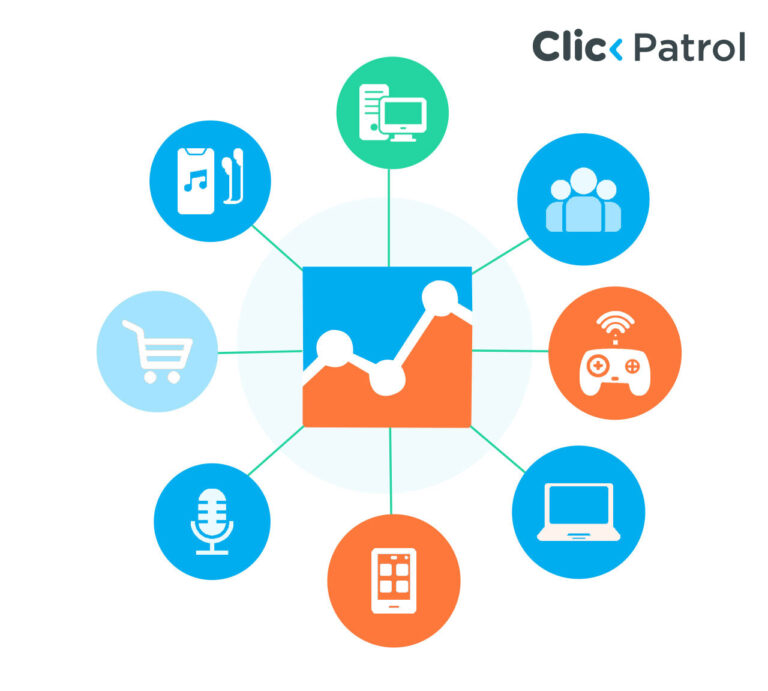
Understanding Automated Fake Click Detection
Abisola Tanzako | Oct 19, 2024

Table of Contents
The perks of using automated fake click detection cannot be overstated
In the world of digital marketing, fake clicks, or more precisely, advertising fraud, have become a serious threat to businesses. Fake clicks describe the deliberate and dishonest clicking of internet advertisements, particularly Pay-Per-Click (PPC) ads, to inflate advertising spending or falsify campaign outcomes. The emergence of automated systems and bots, which are capable of large-scale fraud, has made this issue worse.
Therefore, automated methods for detecting fake clicks have emerged as vital resources for businesses seeking to safeguard their advertising expenditures. This article will explain fake clicks and why they are such a severe problem, explain automated detection, and review some of the top fraud prevention products on the market.
What is a fake click?
Fake click is when people, competitors, or automated bots frequently click on internet advertisements with bad intentions. These fraudulent clicks do not result in conversions, leads, or meaningful interaction. The goal behind fake clicks can vary, some of which include:
- Depleting competitors’ budgets: A company competitor might employ fake clicks to deplete your advertising budget, removing your ads from search results for the day and leaving your ads more visible.
- Generating revenue for publishers: In certain situations, website owners that display advertisements (particularly in Google AdSense) may choose to click on the ads themselves or employ bots to artificially inflate clickthrough rates, thereby raising their earnings at the expense of advertisers.
- Distorting ad performance metrics: Fraudsters clicking on advertisements can distort ad performance data, making it more difficult for companies to determine the true impact of their advertising campaigns.
How automated fake click detection works
Automated fake click detection examines data trends using sophisticated algorithms, machine learning (ML), and artificial intelligence (AI), to identify fraudulent activity. These systems continuously track and evaluate interactions with online advertisements, searching for anomalies or questionable trends that could point to fraud. Here’s how automated fake click detection typically works:
- Data collection: Automated systems continuously collect data from adverts, including IP addresses, click timestamps, user devices, geographic locations, and user behavior patterns.
- Pattern analysis: The gathered information is examined to look for any unexpected trends, such clicks from suspicious geographic areas, clicks from the same IP address repeatedly, or click-through rates (CTR) that are abnormally high without converting. It is suspected that these patterns are fake.
- Machine learning models: These algorithms are trained to identify particular traits of fake clicks. They employ historical data, user behavior, and fraud instances from the past to distinguish between legal and illegitimate clicks. The system’s ability to detect fraud gets more precise the more data it crunches.
- Monitoring and blocking in real-time: Since automated systems work up-to-date, they can stop fraudulent clicks as soon as they occur. These technologies prevent fraudulent clicks from adversely influencing an ad campaign’s performance metrics and budget by instantly reporting questionable activity.
- IP and device blacklisting: The system has the ability to automatically prohibit specific IP addresses or devices from interacting with the advertisements going forward in the event that fraudulent activity is identified. This reduces the likelihood of the same source attempting fraud repeatedly.
- Reporting and refund requests: Automated systems offer thorough reports on suspicious activities in addition to identifying and stopping fraud. Advertising networks may be asked to reimburse you for fraudulent clicks that were inadvertently invoiced by using these reports.
Benefits of automated fake click detection
The benefits of automated fake click detection include:
- Protection: Automatic mechanisms work in actual time, immediately detecting and blocking fraudulent clicks. This guarantees that your advertising spend is safeguarded at all times, even during high traffic or susceptible campaigns.
- Precision and accuracy: Thanks to the application of AI and ML models, automated fraud detection systems can evaluate huge amounts of data with great precision. This distinguishes between authentic and fraudulent clicks, assisting advertisers in making informed choices.
- Cost savings: Businesses eliminating fake clicks can prevent them from spending a significant amount of money on fake clicks by eliminating return on investment (ROI) and enabling businesses to redirect funds to appropriate clicks that result in conversions.
- Comprehensive reporting: By offering thorough information and insights on fraudulent activity, automated systems assist marketers in realizing the scope of the issue. These reports are also used as proof when asking ads for refunds for clicks that were fraudulently made,
- Flexibility and customization: Many fake click detection systems let businesses choose the degree of security that best suits their needs. Advertisers can set limits for suspicious activity, prohibit certain IP ranges, or exclude geographic regions known for high-incidence fake click integrity.
- Scalability: As online ad campaigns grow, so do the opportunities for fake clicks. Automated tools scale alongside advertising campaigns, providing continuous protection even for large-scale ad operations.
How to use automated fake click detection
To implement automated fake click detection effectively, follow these steps:
- Select the appropriate tool: Choose an automatic fake click detection solution that best suits your advertising platforms (e.g., Google Ads, Facebook Ads) and business requirements. Before choosing, weigh the features, cost, customer service, and so on.
- Integrate with your ad platform: Most fake click detection products include simple connections to well-known ad networks. As soon as they are incorporated, these tools will begin campaign monitoring.
- Establish custom rules and filters: Adjust your tool’s settings according to your sector, intended market, and geographic scope. For instance, you should eliminate IP addresses that exhibit questionable activity or block traffic from particular areas that are notorious for fake clicks.
- Track campaign performance: Analyze the reports of regularly fraudulent trends. Use this data to tweak your ad settings and campaigns to maximize performance.
Best automated tools for fake click detection
Numerous automated solutions are available to assist businesses in identifying and preventing fake clicks. These tools include functions like IP filtering, active monitoring, and thorough reporting to shield advertisers from fraudsters.
ClickPatrol
Another effective automated solution for detecting fake clicks is ClickPatrol, which focuses on stopping bot clicks and invalid traffic from undermining ad campaigns. It is a well-liked option for businesses managing Google Ads campaigns because of its fraud prevention tools and monitoring capabilities. Key features include:
- Traffic analysis and fraud detection powered by AI.
- IP filtering and bot detection.
- Comprehensive reports to spot trends in fraud.
- Simple interface for Google Ads and other advertising networks.
ClickCease
One of the top platforms for automatically detecting click fraud is ClickCease. It is designed to defend PPC campaigns, particularly Google Ads and Facebook Ads, from fraudulent activities. By monitoring each click and blocking shady IP addresses, the software makes sure that only authorized users see your adverts. Key features include:
- Tracking clicks activity.
- Automated blocking of fraudulent IP addresses.
- Detailed reporting on suspicious activities.
- Integration with Facebook and Google Ads.
Lunio
An AI-driven software called Lunio (previously known as PPC Protect) assists businesses in preventing fake click and illegitimate traffic in PPC campaigns. It offers sophisticated protection against fraud caused by bots and people cause machine learning algorithms to evaluate data. Key features includes:
- Traffic and user behavior analysis powered by AI.
- High-risk areas can be blocked using geotargeting features.
- Device fingerprinting and IP blacklisting are used to stop repeat offenders.
- Connectivity with Bing Ads, Google Ads, and other key networks.
ClickGuard
ClickGuard is a tool that lets advertisers monitor and manage click sources to safeguard PPC campaigns. In addition to providing comprehensive insights into campaign effectiveness, it includes customized rules for identifying and blocking fake traffic. Key features include:
- Thorough examination of click behavior.
- IP filtering and active fraud detection.
- Customizable rules for fraud prevention.
- Advanced reporting tools for in-depth examination.
Safeguarding your clicks
Fake clicks are becoming a bigger problem, yet automated fake click detection systems give businesses a useful solution to safeguard their advertising expenditures. These systems accurately detect and stop fraudulent clicks, saving organizations money and enhancing campaign performance by utilizing AI, machine learning, and active monitoring.
An essential component of any strategy should be automatic click fraud detection, regardless of the size of your PPC campaign or your ad purchase management. By incorporating programs like ClickCease, Lunio, ClickGuard, and ClickPatrol into their campaigns, advertisers can be sure that fraudsters will not steal their advertising budget. You can also be sure that your advertising money is being spent on real, high-quality traffic that generates actual results.
FAQs
Q. 1 Why is fake click protection necessary?
If you do not have fake click protection, false clicks could drain your ad budget, leaving less money for actual clicks that could result in conversions. Thanks to fraud protection, your campaigns’ return on investment will be maximized.
Q2: Can fake clicks be automatically detected by Google Ads?
Although Google Ads has mechanisms in place to identify fraudulent clicks, these are only sometimes perfect. Automated fake click detection tools add another degree of protection by providing more thorough active monitoring and protection.





